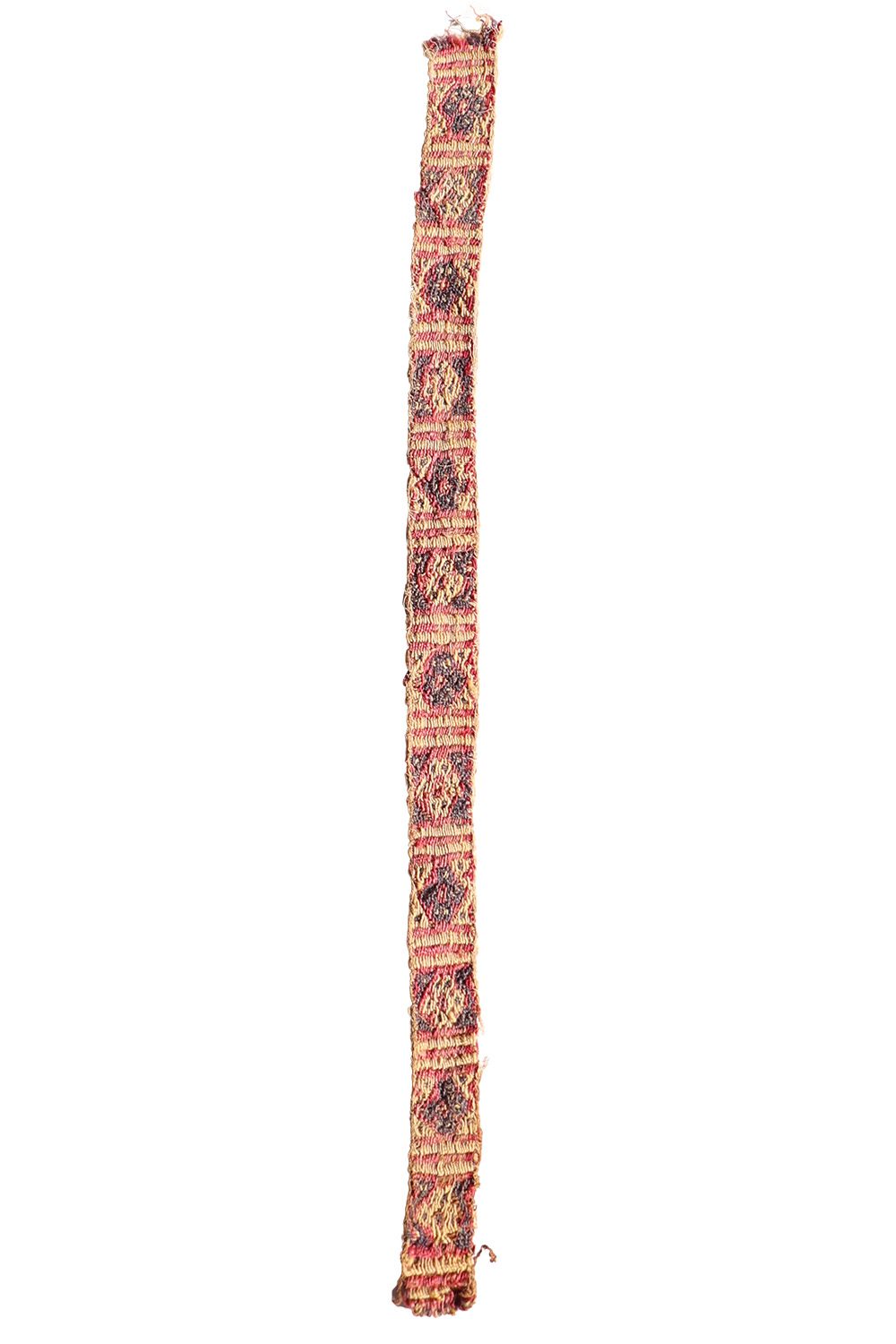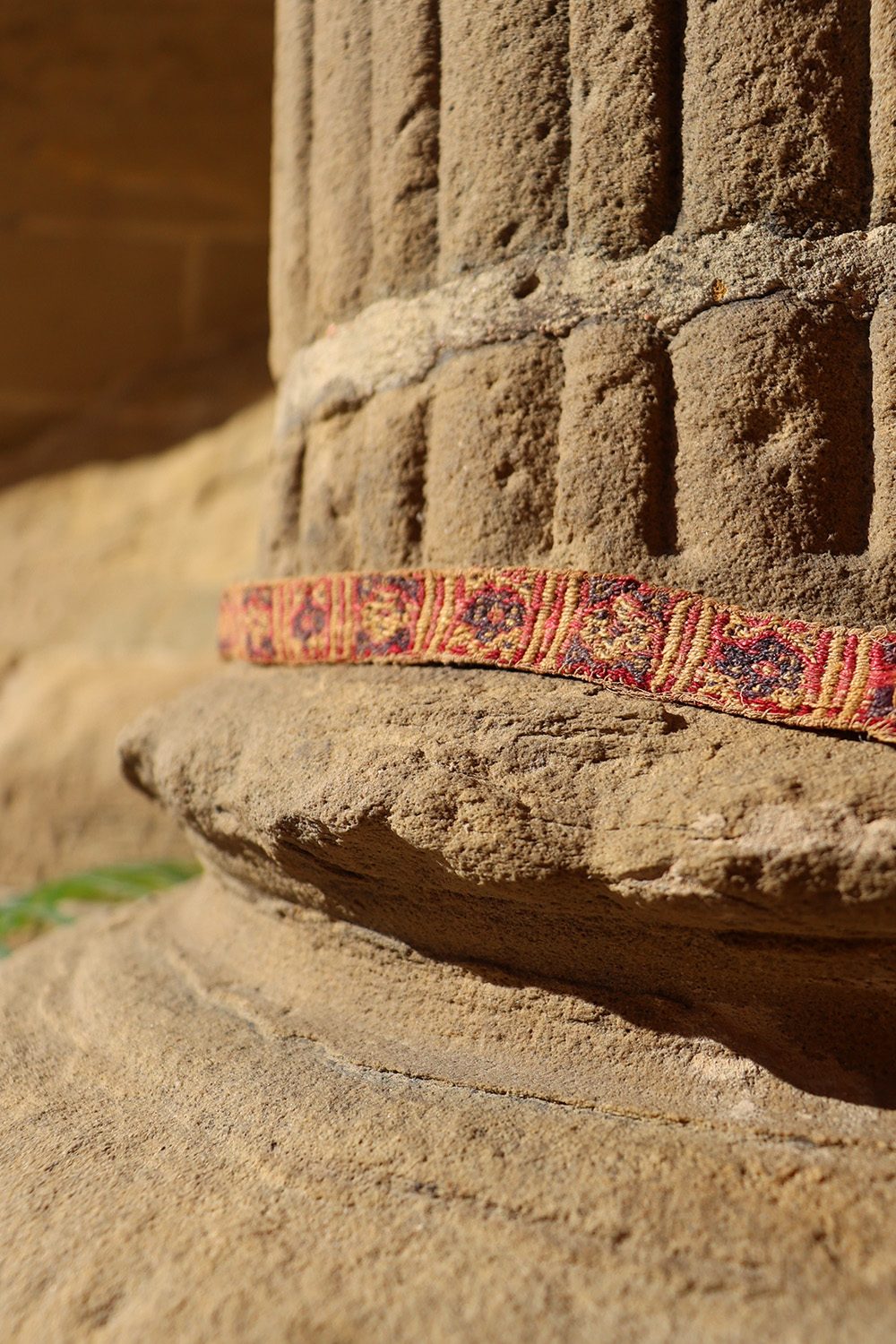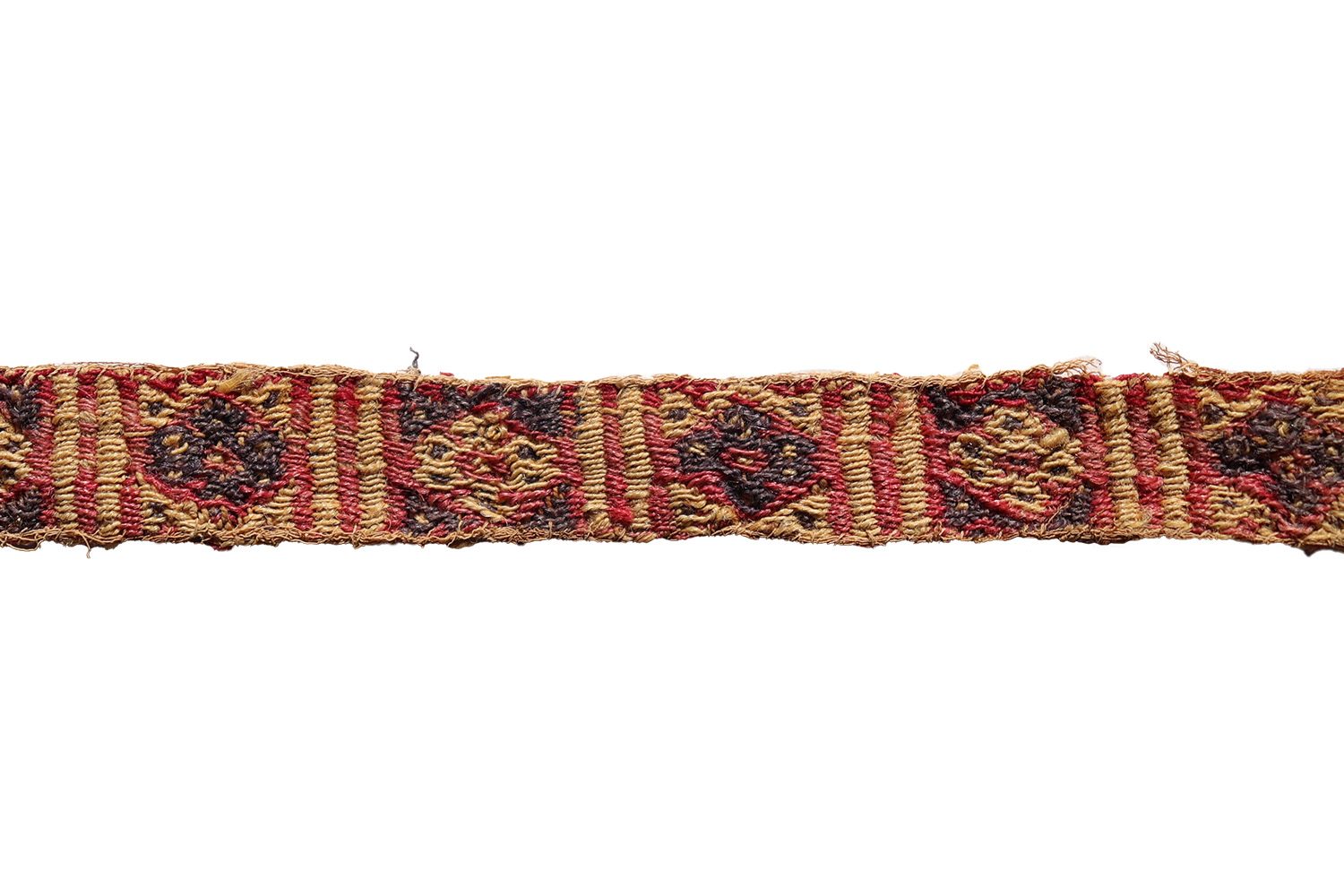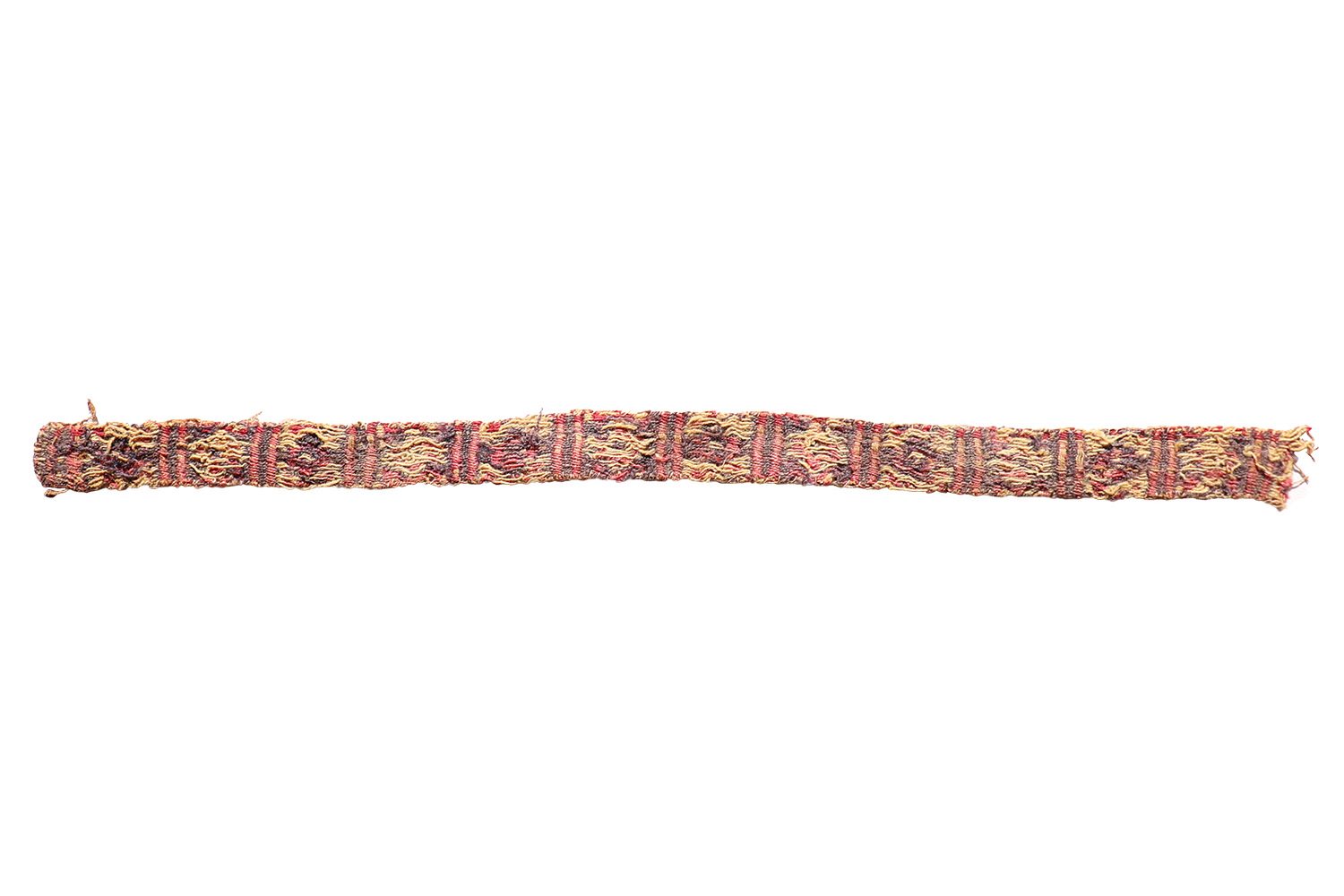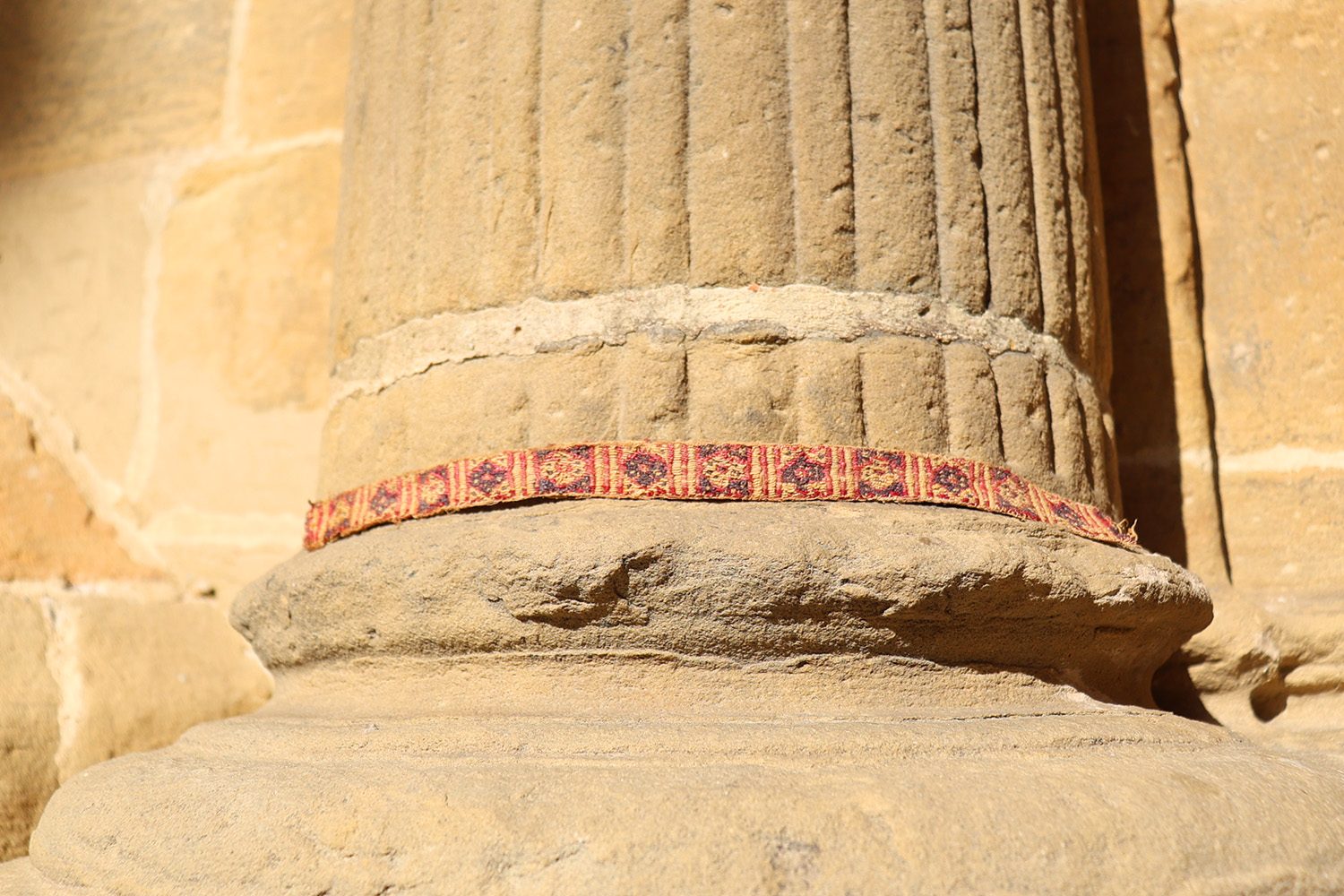170.00 €
The Wari or Huari culture was an Andean civilization that flourished in the central Andes from approximately the 7th to the 13th century AD. c.,
The Wari are particularly known for their textiles, which were well preserved in desert burials. The standardization of textile motifs serves as artistic evidence of state control over the production of elite art in the Wari state. Surviving textiles include tapestries, hats, and robes for high-ranking officials. There are between six and nine miles of thread in each tunic, and they often feature highly abstract versions of typical Andean artistic motifs, such as the god of the staffs. It is possible that these abstract designs served as “a mysterious or esoteric code to keep uninitiated foreign subjects out” and that the geometric distortions made the wearer’s chest appear larger to reflect his high rank.
A Huari Culture band, 8th to 12th century. South Central Perú. Finelly woven and in mint condition.
Material: Wool
Origen: Huari or Wari Culture, Peru
Size: 39×2´8 cms.
8th to 12th century
1 in stock
Additional information
| Weight | 0.1 kg |
|---|
Subscribe and receive the lastest news
